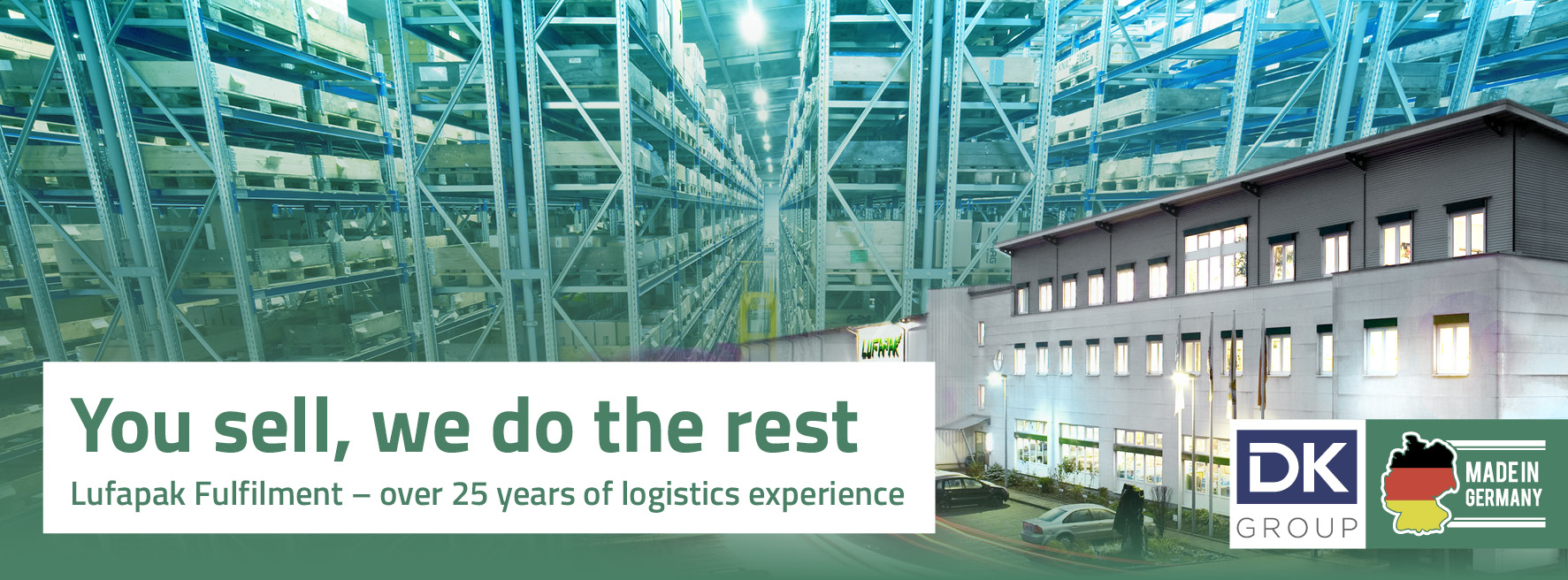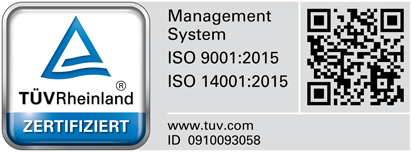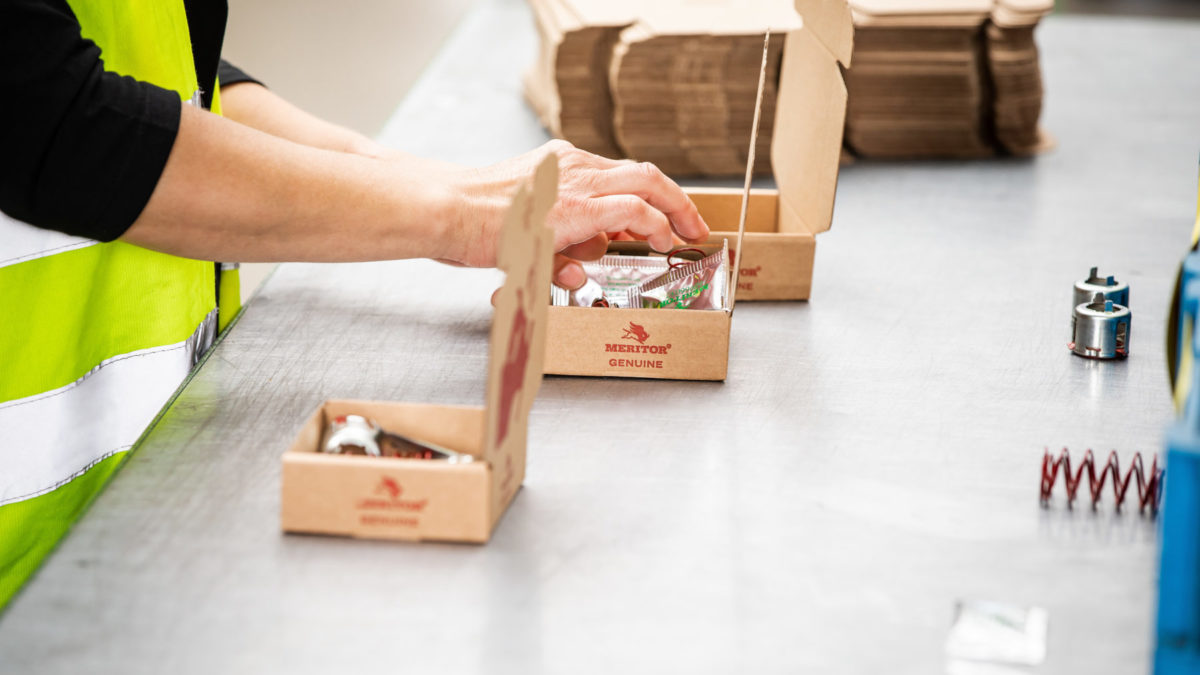sales@lufapak.de +49 2631/384-0 Contactform
Packaging materials play a central role in modern logistics and the packaging industry. They not only serve to protect goods during transport and storage, but also contribute to the efficiency and cost-effectiveness of the entire supply chain. From the food and pharmaceutical industries to the automotive sector and e-commerce, packaging materials are an indispensable part of everyday business.
Their importance goes far beyond simple protection. Packaging materials ensure the integrity and safety of products, facilitate handling and stackability and at the same time offer opportunities for brand communication through printed packaging. Packaging materials must also fulfil strict legal guidelines and safety standards in order to meet both legal requirements and consumer expectations.
What is packaging?
Packaging materials are all materials and containers that are used to pack, protect, transport and store goods. They play a fundamental role in the packaging industry by ensuring that products remain undamaged and in perfect condition throughout the supply chain – from manufacturer to retailer to end consumer.
The main functions of packaging materials include
- Protection: packaging materials provide protection against physical damage such as impact, vibration and pressure, as well as environmental influences such as moisture, dust and temperature changes.
- Transportability: They facilitate the handling, transport and distribution of goods by improving stackability and handling.
- Storage: Packaging materials enable efficient storage by storing products in a space-saving and organised manner.
- Information: Packaging materials carry essential product information, including labelling, barcodes, instructions and legal notices.
- Marketing: It serves as a carrier for brand messages and marketing information, increasing product appeal and brand recognition.
Packaging materials are indispensable in the packaging industry, as they not only ensure the protection and safety of products, but also improve the efficiency of logistics processes and contribute to customer satisfaction.
Types of packaging materials
Packaging materials come in different shapes and materials, each offering specific properties and advantages. Different packaging materials are used in the packaging industry to meet the diverse requirements for protection, transportability, storage and marketing.

Plastic packaging materials
Plastic packaging materials are widely used due to their versatility, durability and mouldability. They include a variety of products such as films, bags, bottles, canisters, crates and pallets. Plastics such as polyethylene (PE), polypropylene (PP) and polyethylene terephthalate (PET) are particularly common. These materials offer excellent protection against moisture, chemicals and mechanical influences. Plastic packaging materials are used in almost all industries, from the food and beverage industry to the pharmaceutical and automotive sectors. They are lightweight, often reusable or recyclable and also offer attractive presentation and marketing opportunities thanks to their transparency and printability.
Metal packaging
Metal packaging is characterised by its exceptional stability and durability. Common metal packaging materials include tins, barrels, drums and crates, which are usually made of aluminium or steel. Their robustness makes them ideal for the transport and storage of hazardous goods, chemicals and liquids. Metal packaging offers a high level of protection against mechanical stress and environmental influences such as moisture, air and light, which makes it particularly suitable for long-term storage and transport over long distances. They are also fully recyclable, making them a sustainable choice.
Packaging made from corrugated cardboard
Corrugated cardboard is one of the most commonly used packaging materials, known for its lightness, strength and environmental friendliness. Corrugated board consists of a corrugated paper layer between two flat paper layers and is available in various thicknesses. It is ideal for cartons, boxes and partitions. The main advantages of corrugated board are its ability to absorb shocks, its ease of handling and its light weight, which reduces shipping costs. In addition, corrugated board is fully recyclable and biodegradable, making it an environmentally friendly packaging option. Typical applications include mail order, the food industry and almost any industry that needs to transport products safely and cost-effectively.
Standardised packaging examples
Standardised packaging is packaging that is produced according to defined standards to ensure uniform size, shape and composition. This standardisation plays a key role in the efficiency and safety of logistics, as it significantly facilitates and optimises the handling, storage and transport of goods.
Euro pallets (also known as Euro pallets) are a typical example of standardised packaging. These pallets have standardised dimensions of 1200 x 800 mm and are designed in such a way that they can be optimally used in common transport systems such as trucks, containers and storage racks. Thanks to the standardised dimensions, logistics processes can be better planned and implemented, resulting in greater efficiency and lower costs.
Another example is standardised containers, which are widely used in international maritime transport. ISO containers have standardised sizes (such as 20 or 40 feet) and thus enable easy stacking and seamless transfer between different means of transport (for example from ships to trucks or trains). This reduces handling times and minimises the risk of transport damage.
Standardised packaging is also used in the food and beverage industry, such as standardised glass bottles and PET bottles. These bottles have standardised shapes and sizes that are adapted to filling systems and packaging machines. This makes the production process more efficient and minimises errors.
Standardisation offers numerous advantages: it increases the compatibility of packaging with handling and storage systems, improves the utilisation of storage and transport capacities and reduces the risk of transport damage thanks to perfectly fitting packaging. In addition, standardised packaging materials facilitate reuse and recycling, as they can be easily returned and reprocessed.
Packaging aids against moisture and rust
In the packaging industry, packaging aids play a crucial role in ensuring the quality and integrity of goods during transport and storage. Two key challenges are moisture and rust, which can cause significant damage to products. Specialised packaging aids are used to protect against these risks.
Packaging aids against moisture
Moisture can lead to a variety of problems, including mould growth, corrosion and the impairment of product quality. Various packaging aids are used to prevent such damage:
- Desiccants: these materials, such as silica gel, clay minerals or molecular sieves, absorb moisture from the surrounding air, keeping the relative humidity in the packaging at a low level. Desiccants are often placed directly into the packaging in small bags. They are particularly useful for sensitive products such as electronics, medicines and food.
- Moisture barrier packaging: These special packs, often multi-layered, provide a high level of protection against moisture ingress. Aluminium composite films and coated plastic films are common examples. They are used to protect goods such as electronic components, medical devices and perishable foods.
- Dehumidifiers: Electronic or chemical dehumidification systems can be used in storage areas or containers to control the general humidity level. This significantly reduces the risk of moisture damage to stored or transported goods.
Packing aids against rust
Rust is a common threat to metal parts and can cause significant costs due to material loss and quality degradation. Various packaging aids have been developed to effectively protect metal parts from rust:
- Anti-corrosion packaging: Special packaging, such as VCI (Volatile Corrosion Inhibitor) films and papers, release corrosion-inhibiting substances that are deposited on the surface of the metal and form a protective layer. This packaging is ideal for the automotive and mechanical engineering industries, where metallic components often have to be transported and stored over long distances.
- Anti-corrosion oils and greases: These are applied directly to metal surfaces to create a physical barrier layer that keeps out moisture and oxygen. They are widely used in heavy industry and in the storage of spare parts.
- Desiccant combinations: Combining desiccants with VCI packaging provides a double layer of protection by reducing moisture while creating a corrosion-inhibiting atmosphere. This is particularly effective for long-term storage and long-distance shipping.
Packaging labelling explained
The labelling of packaging materials is an essential part of the packaging and logistics processes. It ensures that all the necessary information for the transport, storage and handling of products is clearly available. Correct labelling contributes significantly to efficiency, safety and traceability throughout the supply chain.
Important elements of labelling
- Identification information: These include barcodes, QR codes or serial numbers that allow the product and packing unit to be clearly identified. Such labelling is crucial for traceability and inventory management as it enables data to be captured and processed quickly.
- Product information: This includes details such as product name, manufacturer, batch number and expiry date. This information is particularly important for the food and pharmaceutical industries, where product traceability and safety are of paramount importance.
- Handling instructions: Symbols and instructions that indicate the correct handling and storage of packaging materials. Common symbols include indications of fragile contents (“Fragile”), storage requirements (e.g. “Keep refrigerated”) and precautions during transport (e.g. “Do not stack”). These instructions help to prevent damage and loss of quality.
- Dangerous goods labelling: Dangerous goods must be specially labelled in accordance with international regulations (e.g. ADR, IATA). These include hazard symbols, UN numbers and specific safety instructions. These markings are essential for complying with legal requirements and ensuring the safety of everyone involved in the transport process.
- Recycling and disposal instructions: Information about the material composition and instructions on how to properly dispose of or recycle the packaging. This information supports sustainable practices and helps companies and consumers to make environmentally friendly decisions.
- Certifications and authorisations: Many products require specific certifications or approvals to be labelled on the packaging. This can be, for example, the CE mark for conformity with European standards or the FSC seal for sustainable forestry.
Importance of labelling
Complete and precise labelling of packaging offers numerous advantages:
- Increased efficiency: clear labelling facilitates automated processing and tracking in storage and transport systems, which increases efficiency and minimises errors.
- Safety: Correct handling instructions and hazardous goods labelling prevent accidents and damage, protect the health of employees and the integrity of the products.
- Traceability: Identification markings enable the complete traceability of products through the entire supply chain, which is particularly important in crisis situations such as product recalls.
- Regulatory compliance: Compliance with legal regulations through correct labelling avoids legal problems and ensures that products can be traded internationally.
- Environmental protection: Recycling and disposal labelling promotes sustainable practices and helps to reduce the environmental footprint.
Approval codes for packaging and their importance for the industry
Packaging approval codes are specific markings that indicate that a particular packaging material or system meets established safety and quality standards. These standards are often set by national and international standardisation organisations and are critical to ensuring safety, efficiency and reliability in the logistics and transport chain.
Approval codes serve several important purposes:
- Safety assurance: they confirm that the packaging material has passed rigorous testing and assessment to ensure its suitability for its intended use. This is particularly important in the packaging of dangerous goods, food and pharmaceutical products, where consumer and environmental safety is paramount.
- Regulatory compliance: Many countries and international organisations require packaging materials to meet certain standards before they can be used for transport and storage. Approval codes ensure that companies comply with these regulatory requirements and can legally distribute their products.
- Quality standard: The use of packaging materials with approval codes signals to customers and partners that the company values high quality standards. This can strengthen trust in the brand and improve the company’s reputation.
Examples of approval codes
- UN approval codes: These codes are issued by the United Nations and are particularly relevant for the transport of dangerous goods. A typical UN code could look like this: “UN 4G/Y30/S/20/USA/M1234”. This code contains information about the type of packaging (e.g. “4G” for cardboard packaging), the maximum permitted load (“Y30” means 30 kg), the type of contents (“S” for solids), the year of manufacture (“20” for 2020), the country of manufacture (“USA”) and a specific manufacturer identification number (“M1234”).
- ISO codes: The International Organization for Standardization (ISO) assigns codes that are recognised worldwide. ISO 9001, for example, is a quality management standard that ensures that packaging materials are manufactured under controlled conditions. For food packaging, there are specific ISO standards such as ISO 22000, which set requirements for an effective food safety management system.
- FDA approvals: In the US, the Food and Drug Administration (FDA) requires specific approvals for packaging materials that come into contact with food or drugs. These approvals confirm that the material is safe and suitable for the intended use.
- CE marking: In the European Union, the CE marking indicates that a product complies with the essential health, safety and environmental requirements. For packaging materials, this means that they are safe to use and environmentally friendly.
Application and advantages
The use of approval codes in practice has numerous advantages. By using approved packaging, companies can ensure that their products can be transported and stored safely. This reduces the risk of transport damage, product recalls and legal problems. Approval codes also facilitate international cooperation, as they are recognised worldwide and therefore simplify trade across national borders.
Furthermore, approval codes help to increase consumer confidence in product quality and safety. By adhering to these standards, companies demonstrate their commitment to high quality and safety standards, which ultimately contributes to customer satisfaction and long-term brand loyalty.
Contact us now and get advice


